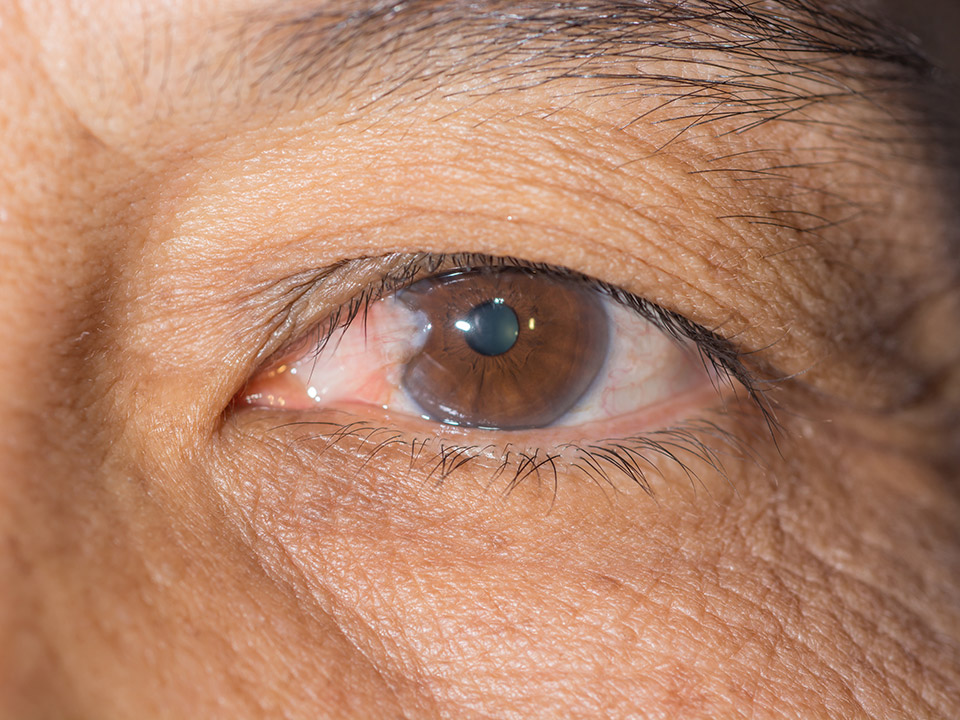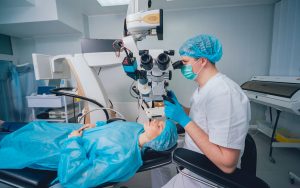How To Treat Pterygium Without Surgery

Pterygium is a common eye condition usually characterized by a growth of fleshy tissue on the conjunctiva, the clear tissue covering the eyeball and lines of the eyelids. While this condition can cause irritation and vision problems, it’s usually not severe and doesn’t require surgery.
This article will discuss some of the most effective non-surgical ways to treat Pterygium.
What is Pterygium?
Also known as Surfer’s Eye, Pterygium usually grows from the inner corner of the eye. It occurs because the body attempts to protect the eye from different environmental elements, such as intense sunlight, wind, dust, or sand.
While the growth might look scary, it isn’t cancer. It might spread gradually during your life or halt at a certain point. In extreme circumstances, it may obstruct your pupil and cause vision problems.
One or both eyes can be affected, and people between the ages of 20 and 40 are more likely to develop Pterygium. Men, especially, are more prone to this condition than women.
Diagnosis is straightforward using a slit lamp- a microscope with an intense, powerful light that enables ophthalmologists to inspect the eye’s surface.
Symptoms of Pterygium
Even though a pterygium is often painless, it can irritate the eye at any stage. The tissue is usually pink, fleshy, and triangular. There’s also a possibility of seeing fine blood vessels.
- Symptoms may include:
- Mild eye pain.
- Burning and itching sensations on the eye surface.
- Inflammation, including bloodshot eye whites on the side with Pterygium.
- Vision problems if the growth occurs across the cornea.
Causes of Pterygium
- Pterygium may occur due to the following:
- Extensive UV light exposure: Pterygium is more common in people who spend a lot of time outside in hot weather. Prolonged exposure to sunlight is assumed to be the cause.
- Sandy or dusty environments: Long-term exposure to windy and dry environments may also cause Pterygium.
- Family history: According to researchers, if someone has a family member with Pterygium, they are likely to develop this condition.
- Combination of factors: A combination of some of the above factors may result in Pterygium.
Diagnosis
In most cases, a slit lamp test is usually enough for a definitive diagnosis. But if other tests are eminent, they may comprise the following:
Visual Acuity Testing
People undergoing visual acuity testing read an eye chart. The doctor instructs them to read detailed lines to test their vision and ascertain whether the Pterygium affects their vision.
Corneal Topography
This is a form of medical mapping technique that a doctor may employ. It helps to measure the cornea’s curvature to check for changes.
Photo Documentation
Usually, the doctor uses the test to monitor the condition. It helps the doctor monitor the growth’s development.
Treatment
Treatment options for a pterygium will vary depending on the severity of your condition.
Mild Pterygium may not need intervention. Anti-inflammatory eye drops such as topical steroids can address redness, irritation or inflammation due to a pterygium. On the other hand, artificial tears can help to alleviate grittiness or dryness.
However, if the condition grows to block your pupil and causes vision problems, surgery is the only way to get rid of it. A pterygium won’t disappear by itself.
How to Treat Pterygium Without Surgery
You can manage pterygium symptoms with the following:
- Eye Drops and Ointments
- Eye drops and ointments might be helpful if the Pterygium irritates the eye. These medications are used daily to reduce irritation or redness. They do so because they contain corticosteroids, which reduce inflammation.
Artificial Tears
Small growths are typically treated with artificial tears to lubricate the eyes. Upon healing, your doctor may apply a unique contact lens over the eye to protect it from UV radiation and other irritants.
Prevention of Pterygium
It’s crucial to take necessary preventive measures and changes in lifestyle to lower the likelihood of developing Pterygium.
These include:
- Wearing a hat with a wide bream and sunglasses when going outdoors.
- Using sunglasses that block UV light (wrap-around, close-fitting).
- Avoiding exposing yourself to irritants like wind, dust, smoke, and chemical pollutants.
- Use of proper eye safety measures in the work environment.
- Avoiding working in extremely high temperatures.
- Splashing cold water in your eyes more often.
- Using artificial tears when your eyes are dry.
Conclusion
Treating Pterygium without surgery involves controlling the symptoms and limiting exposure to excessive UV light and other environmental irritants. While surgery may be necessary for other cases of Pterygium, it’s not usually necessary. The above treatment options can help prevent the condition and improve comfort.
Pterygium Treatment FAQs
When is Surgical Treatment Needed?
Surgery might be necessary if:
- Eye ointments and drops aren’t relieving your symptoms.
- You want to improve the appearance of your eye.
- The condition grows very large to the point where it either obstructs your vision or pulls on your cornea, changing its curvature and resulting in astigmatism, which can blur your vision.
What Does Surgery Entail?
Surgery involves several strategies, including:
- Removing the Pterygium alone.
- Removing the Pterygium and covering the afflicted part with a piece of healthy conjunctiva. Usually, the conjunctiva is taken from the area behind the upper eyelid. While this is the best procedure for stopping the disorder’s return, it is more technical and a longer surgery.
- Getting rid of the Pterygium and applying an “amniotic membrane” bandage to the affected part to aid in the eye’s healing.
- During surgery, your provider may give you medications to help prevent the eye condition from growing back. Such medications include 5-fluorouracil and mitomycin C.
How Long Does It Take to Recover After a Pterygium Removal?
It may only take you a week or two off work while recovering after a pterygium removal.
Can I Watch TV or Read After a Pterygium Treatment?
Yes, you can. However, after treatment, you may experience blurry vision for a short while, making this challenging. The best thing to do is to give your eyes a rest. This means putting off reading or watching till the day after treatment.




